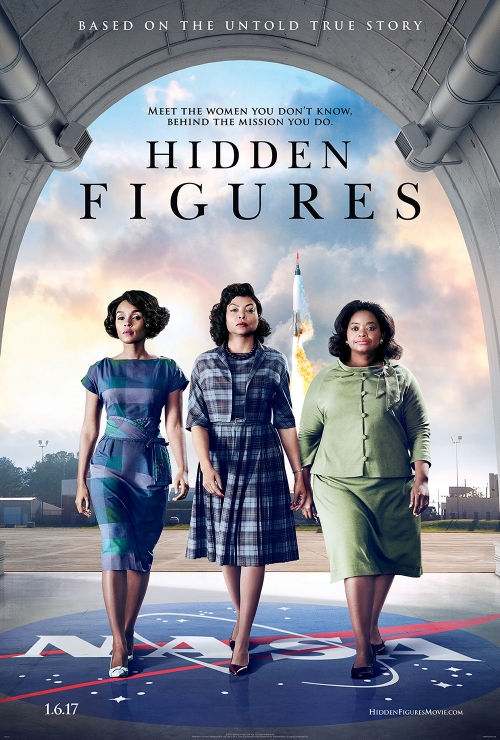“Hidden Figures”: A History Revealed
Gallery

“Yes, they let women do some things at NASA, Mr. Johnson, and it’s not because we wear skirts. It’s because we wear glasses.”
So quips Katherine Johnson, portrayed by Taraji P. Henson, whose moxie and mind are celebrated alongside her NASA colleagues Dorothy Vaughn and Mary Jackson in the 2017 Academy Award nominated feature “Hidden Figures.” This high-spirited film, the first to highlight major accomplishments made by black women in the NASA Space Program during a time of deep segregation, also scored a Best Supporting Actress nomination for Octavia Spencer (Vaughn), Best Adapted Screenplay for duo Schroeder and Melfi, and is based on Margot Shetterly’s newly published historical narrative of the same name.
“Hidden Figures” draws us into Hampton Virginia, 1961, at the height of Jim Crow. NASA’s Langley Research Center is employing professional female mathematicians, engineers and scientists to work as human “computers.” Before electronic versions would successfully fill this role, this was a term for employees, and in Langley’s case female employees, who, according to NASA, filled many pivotal roles. Computers read, plotted and calculated critical data from tests in Langley’s wind tunnels and research centers, helping to keep pace with the production of World War II, launching men, and thus America, closer to glory. There were those who graduated to higher levels of aeronautical engineering, trajectory analysis and research. The trio in this biographical tale is part of a computer pool of all black “girls” who work from the basement “colored” computer section, using the “colored” bathrooms and reporting to a white supervisor upstairs. Despite obvious inequalities, these ladies are motivated, audacious and determined to rise upward. When asked by a head scientist, “If you were a white man, would you wish to be an engineer?” Jackson replies, “I wouldn’t have to, I’d already be one.”
“Hidden Figures” tells the true stories of just a few of the extraordinary minds and courageous spirits that strove to find a way to contribute, to have an equal part in the process of exploration and to be recognized by a society aiming not to notice them. According to NASA, the achievements made by these women, and many like them, propelled America’s footing in the great Space Race and played a foundational role in putting Neil Armstrong on the moon.
If you’re thinking this may be a little too much history for the weekend, you will be surprised to find how fun and uplifting this story plays. In addition to celebrating the historical achievements of women, and in particular black women, this family friendly pick will have you thoroughly captivated by today’s talented black actresses on screen. Henson, Spencer and Monae are riveting, comical and heartwarming. You will laugh aloud at the witty banter, cry at the unsubtle injustices and groove in your seat to Pharrell and his feel-good soundtrack.
These actresses are pioneers in their own right. Sadly, after 89 years of Academy Awards, Halle Berry holds the only Oscar given to a black woman in the category of Best Actress. There have been six Oscars given to black women in the role of Best Supporting Actress. On February 26, Octavia Spencer has the opportunity to make history as the first black actress to be a two-time Oscar winner. Spencer won the 2012 Best Supporting Actress for her role in “The Help.” Spencer will have competition from worthy fellow black actresses: Naomie Harris, for her performance in “Moonlight,” and Viola Davis, who gave an unforgettable performance in “Fences.”
The Academy finally made a move in the right direction by nominating several people of color this year and by recognizing “Hidden Figures” for Best Movie. Let’s hope the Academy voters see the historic significance of this and don’t get lost in La-La Land. Distinguishing these hidden figures on and off the screen would be one small step for Hollywood.
